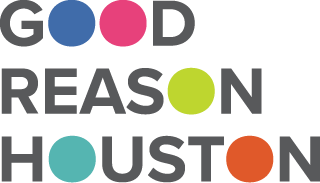- HISD Pre-K school students report progress on literacy assessments
- 8th-grade algebra placement has positive impacts on student achievement
- Employer commitments are essential for effective youth workforce programs
- Innovative education overhaul shows promise in boosting student achievement
- A return to fundamental, evidence-based teaching is key to reversing educational decline


Photo by Brett Coomer/Staff photographer at Houston Chronicle
Houston ISD has made significant strides in early literacy, with 60% of tested students meeting year-end literacy benchmarks, signaling progress amidst challenges. Texas preschool education lags behind national standards, meeting only four of the National Institute for Early Education Research’s ten quality benchmarks. While Houston ISD is dedicated to enhancing literacy instruction through the introduction of new support teams and professional development, it, like all districts across our region, faces obstacles at the state level, including underfunding and quality improvement challenges.
🚀 What it Means for Houston:
Houston ISD’s commitment to improving early childhood education through literacy instruction enhancements and the addition of more pre-K seats reflects the city’s dedication to educational progress. However, state-level constraints, such as underfunding and quality improvement challenges, remain significant hurdles we must think through in order to raise the quality of Houston’s preschool programs.
🏫 What it Means for Houston Students:
Houston’s recent progress in literacy strategies shows promise for benefiting a wider range of students. However, to fully realize these potential gains, the city must address persistent challenges, particularly racial disparities in education. Additionally, Texas needs to improve its preschool standards to meet national benchmarks, as these early educational experiences are crucial for students’ long-term development and success.

Photo by Stephane Lizotte/Getty Images
A recent study has shown that placing students in eighth-grade algebra or related advanced math courses has immediate positive effects. These benefits extend beyond the students’ own math outcomes, impacting their classmates’ achievement levels and even the quality of teachers providing the instruction. Students placed in eighth-grade algebra are more likely to be taught by experienced, high-performing teachers, which contributes to improved student achievement in math and English language arts. However, simply increasing advanced algebra options won’t be sufficient until students are adequately prepared in prerequisite years.
🚀 What it Means for Houston:
Houston’s education landscape is poised for transformation, particularly in STEM fields. HISD’s increasing math proficiency, contrasting statewide declines, indicates a strengthening pipeline for advanced math readiness. The success of New Education System (NES) schools, where students significantly outperform their peers in math, suggests potential for broader reform benefits. This trend could catalyze a shift in Houston’s educational approach, emphasizing early preparation for advanced math and potentially yielding benefits across multiple subjects.
🏫 What it Means for Houston Students:
The recent enactment of Senate Bill 2124 in Texas, requiring advanced math pathways for top-performing students, represents a significant shift in educational policy. This initiative could enable Houston students to access advanced math courses earlier, fostering greater preparedness for academic challenges. However, it’s crucial to ensure that students are adequately prepared in prerequisite years to fully benefit from advanced math courses. This emphasizes the importance of a comprehensive approach to math education, starting from earlier grades, to maximize student success.
*Senate Bill 2124 requires that students who score in the top 40% on their fifth-grade math assessments be automatically enrolled in advanced math courses starting in the sixth grade.

Photo by Industryviews at Shutterstock, Inc.
Employer commitments are pivotal for the effectiveness of youth workforce programs aiming to bridge the gap between employers’ talent needs and workforce training programs. The Heckscher Foundation for Children initiated a workforce program that required employers to commit in writing to hiring graduates of training programs. The program showcases promising early outcomes, with high completion rates for training and industry certifications and a remarkable 98% of graduates securing full-time jobs. These results emphasize the crucial role of employer involvement in shaping effective workforce programs and maximizing their long-term impact.
🚀 What it Means for Houston:
Houston’s diverse global industries position the city as a potential hub for technological advancement and global connectivity. Given the city’s scale, focusing on employer involvement in youth workforce programs could significantly enhance Houston’s overall workforce readiness. Collaboration between employers and educational institutions is crucial for developing effective programs that bridge the education-employment gap.
🏫 What it Means for Houston Students:
Strengthening employer commitments in youth workforce programs offer Houston students valuable skill-building opportunities, bolstering their preparedness for future employment. To maximize effectiveness, these programs must overcome funding and quality improvement challenges. Initiatives like UpSkill Houston, driven by employers and involving 200 stakeholders, are aligning job training with employment needs, fortifying the skilled worker pipeline. The success of the Hecksher Foundation’s programs offers an inspiring model, potentially catalyzing similar projects to bridge the gap between training and employment opportunities for Houston’s youth.

Photo by Yuri A. at Shutterstock, Inc.
The HISD intervention is being closely watched by education leaders nationwide as a potential model for large-scale urban school district reform. Houston Independent School District (HISD) is undergoing a state takeover, led by Superintendent Miles, which has resulted in sweeping changes to teaching methods, staffing, and resource allocation across 85 out of 270 schools in the 2023-24 school year. The overhaul aims to rapidly improve student achievement and close performance gaps, particularly for Black and Latino students. While early results show improvements in test scores, the changes have also led to increased teacher turnover, financial challenges, and community protests.
🚀 What it Means for Houston:
Increased national attention on Houston’s schooling could attract more resources including human capital but also increase the pressure experienced by our city’s education system at a time of alarming gaps in student achievement overall. Previous high-profile reform efforts in other cities have often struggled to maintain momentum and support over time. Making this large-scale change both impactful and sustainable could be a significant opportunity for Houston to shine.
🏫 What it Means for Houston Students:
After a tumultuous first year, HISD reports improved STAAR scores across all student groups, with notable increases for Black and Hispanic students. Superintendent Miles sees this as evidence of the transformation model’s success. Students can expect continued reforms, including higher classroom engagement expectations, weekly progress tracking, and a prompt start to instruction. These changes aim to build on the initial positive momentum and further boost student achievement.

Illustration by Giacomo Bagnara at The Economist
A return to fundamental, evidence-based teaching is key to reversing educational decline.This trend signifies the recognition of the importance of proven teaching methods in enhancing student achievement. However, implementing evidence-based teaching requires a concerted effort to overcome challenges such as resistance to change and the need for comprehensive teacher training.
🚀 What it Means for Houston:
The Economist’s recommendations for education reform align closely with Houston’s current challenges and initiatives. Emphasizing fundamentals, rigorous assessments, and making room for schools that offer parents choice mirror ongoing efforts in Houston’s public education systems. The focus on high-quality instruction and accountability, exemplified by the success of HISD’s NES programs, signals a positive trajectory for educational reform in Houston. As these evidence-based practices continue to yield results, expect to see further implementation of similar strategies to enhance student achievement and restore educational quality.
🏫 What it Means for Houston Students:
The resurgence of a “Back-to-Basics movement” in education signals a proactive approach by schools and policymakers to tackle stagnating educational outcomes and recoup lost ground. Notably, knowledge-building curricula are gaining traction, facilitated by state initiatives, while teaching methods rooted in explicit instruction principles are experiencing a revival. However, to fully leverage the potential benefits of evidence-based teaching for Houston students, it’s imperative to address challenges such as resistance to change and ensure comprehensive teacher training.
Worth a Read:
- Forget Hot-Button Ed Issues — Voters Want Safe Schools and Kids Who Can Read
- Impact of Emergency Teacher Licensures in Massachusetts
- The Truth About Teachers’ Summers
- Who Should Be Allowed to Cross the School District Line — Bureaucrats or Parents?
- Most Texas adults supports school vouchers, new survey finds


